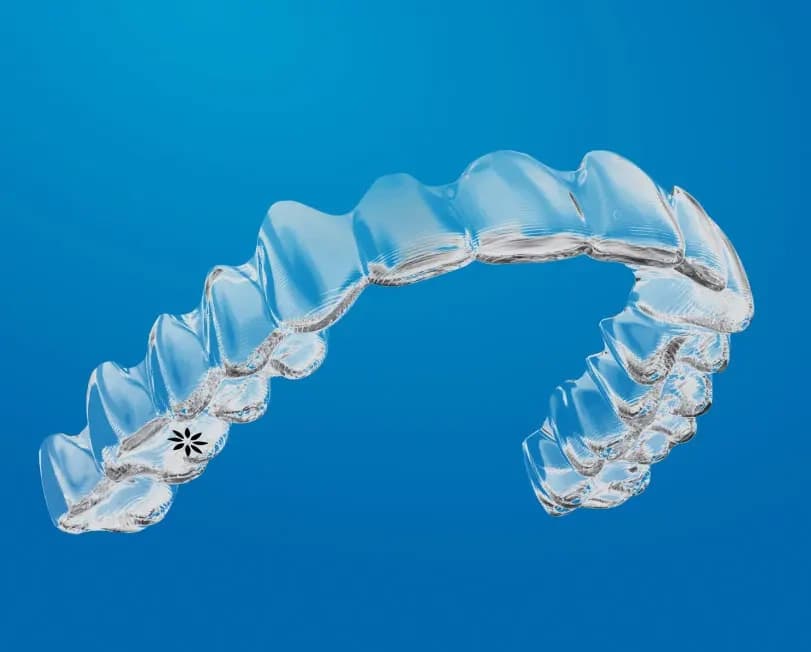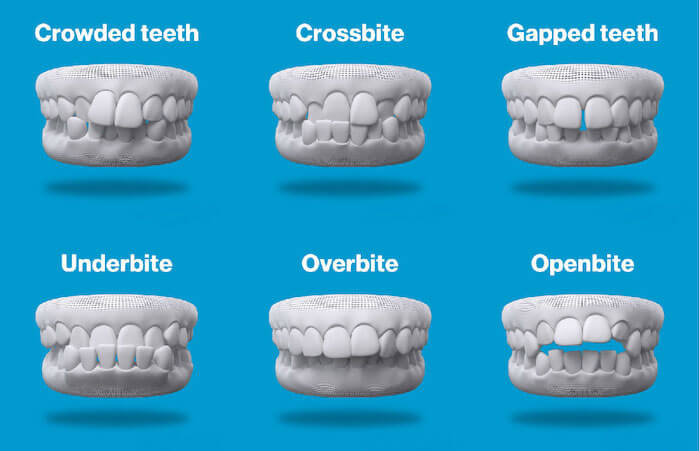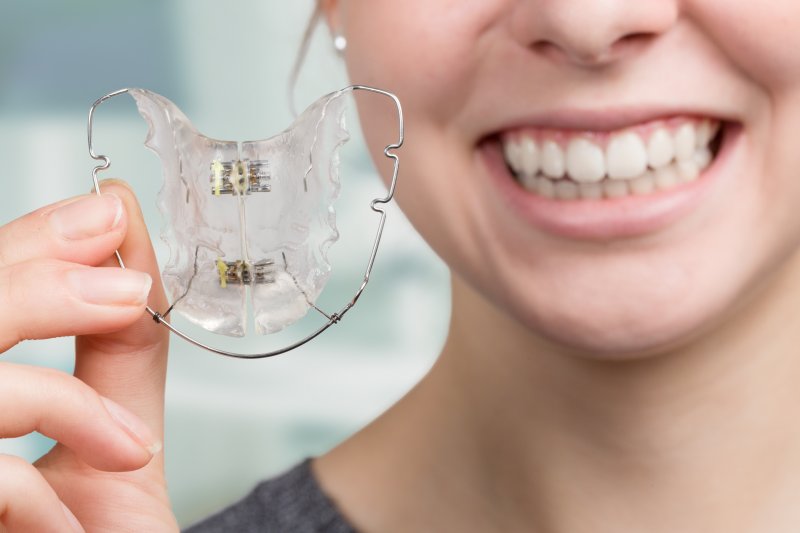What to Anticipate Throughout Your Invisalign Journey: A Comprehensive Overview
What to Anticipate Throughout Your Invisalign Journey: A Comprehensive Overview
Blog Article
Invisalign vs. Conventional Braces: Which Option Is Right for You?
When considering orthodontic therapy, the option between Invisalign and traditional braces presents a number of important variables that warrant mindful evaluation. Invisalign supplies a discreet choice with removable aligners, while traditional dental braces supply a more visible yet reliable service for serious imbalance. Each option incorporates unique benefits and drawbacks related to aesthetic appeals, convenience, treatment duration, and price. Recognizing these subtleties is vital for making an informed choice that aligns with your individual choices and way of living. The inquiry remains: which choice will finest meet your orthodontic needs and assumptions?
Overview of Therapy Options

On the other hand, traditional braces contain metal braces and cables that are bonded to the teeth. This approach applies constant stress in time to attain alignment. While reliable for intricate orthodontic issues, typical braces require normal brows through for adjustments and can present obstacles in maintaining dental hygiene due to the problem of cleansing around brackets and wires.
Both options have their values, and the choice frequently pivots on certain oral problems, way of life choices, and patient compliance. Ultimately, consulting an orthodontic specialist is essential for establishing one of the most ideal treatment plan tailored to individual needs. Understanding the subtleties of each alternative can considerably influence the overall success of orthodontic therapy.
Visual Considerations
A substantial variable affecting the selection in between Invisalign and traditional braces is the visual allure each treatment supplies. Invisalign aligners are crafted from clear plastic, making them practically unnoticeable when used. This discreet appearance is especially appealing to adults and teenagers who may really feel awkward concerning their orthodontic therapy. The ability to maintain a natural smile throughout the placement procedure can dramatically boost the client's self-confidence in specialist and social settings.
In contrast, typical braces contain steel brackets and cables, which can be much more recognizable. While improvements in orthodontic technology have brought about the advancement of smaller sized brackets and tinted elastics, conventional dental braces still preserve an even more conspicuous account. For some people, the visibility of dental braces might prevent them from seeking needed therapy.
Ultimately, the selection between Invisalign and typical dental braces may pivot on personal preferences concerning appearances. Clients that focus on discernment typically lean towards Invisalign, while those who are less concerned regarding presence might select typical dental braces. Understanding the aesthetic ramifications of each alternative is important for making an educated decision that aligns with one's lifestyle and preferences.
Comfort and Convenience

In regards to ease, Invisalign aligners are removable, enabling individuals to enjoy their favorite foods without limitation and keep optimal oral hygiene. Brushing and flossing are streamlined, as the aligners can be secured during these routines, whereas typical braces require mindful navigating around brackets and cords.
In comparison, traditional braces necessitate normal changes, making them much less practical for those with active timetables. Generally, the comfort and ease of Invisalign make it an enticing option for numerous people seeking orthodontic therapy.
Treatment Duration and Performance
While both Invisalign and standard braces are reliable in fixing oral misalignments, the duration of therapy can differ substantially in between both alternatives. Generally, Invisalign therapy can take anywhere from visit this page 12 to 18 months, depending upon the complexity of the instance. The clear aligners work by slowly changing teeth into their preferred positions, and routine follow-ups with an orthodontist aid ensure development remains on track.
On the other hand, conventional dental braces frequently need a longer dedication, typically ranging from 18 months to three years. This results from their fixed nature and using brackets and cables, which can be much more reliable for severe misalignments and complicated instances (Invisalign). The therapy performance of traditional braces is well-documented, as they enable for specific adjustments and higher control over tooth activity
Inevitably, the choice between Invisalign and conventional dental braces might rest on both the anticipated treatment duration and the details oral concerns handy. Consulting with an orthodontist is critical, as they can supply tailored suggestions based on private requirements, ensuring the picked approach lines up with wanted outcomes and durations.
Expense Comparison and Insurance Policy Alternatives
Cost plays a significant duty in the decision-making procedure for people taking into consideration orthodontic therapy, whether choosing Invisalign or conventional braces. On standard, the expense of Invisalign arrays from $3,000 to $8,000, while standard braces generally cost in between $2,000 and $6,000. Factors affecting these expenses include the intricacy of the situation, the duration of therapy, and geographical area.
Insurance policy protection can considerably impact out-of-pocket expenditures. Numerous dental insurance policy strategies supply partial protection for orthodontic therapies, however the specifics can vary extensively. It is critical for patients to review their insurance coverage to establish the degree of coverage for either choice. Usually, standard braces may be more often covered by insurance strategies contrasted to Invisalign, which some insurance companies classify as a cosmetic treatment.
Furthermore, numerous orthodontic practices provide versatile payment plans, making both therapy alternatives more easily accessible. Patients should ask about possible click for more funding alternatives and discounts for in advance repayments. Reviewing the complete cost, including insurance advantages click for more and repayment plans, is important for making an educated choice that lines up with both visual preferences and spending plan factors to consider.

Conclusion
In recap, the option in between Invisalign and traditional dental braces hinges on numerous aspects, including visual preferences, comfort, therapy period, and expense. Invisalign supplies a very discreet, removable choice that promotes oral health and dietary adaptability, while standard dental braces may be a lot more appropriate for complex dental concerns and commonly come at a lower rate point. Ultimately, appointment with an orthodontist is vital to assess private circumstances and identify one of the most suitable treatment choice for attaining optimal dental positioning.
When considering orthodontic treatment, the selection in between Invisalign and traditional braces provides numerous important elements that warrant mindful evaluation.Contrasting Invisalign and traditional braces discloses distinctive therapy options for orthodontic modification.While both Invisalign and typical braces are effective in fixing dental misalignments, the period of therapy can differ considerably in between the 2 alternatives.Price plays a significant role in the decision-making process for individuals thinking about orthodontic therapy, whether deciding for Invisalign or typical dental braces.In recap, the selection in between Invisalign and typical dental braces hinges on several variables, consisting of aesthetic preferences, comfort, treatment period, and cost.
Report this page